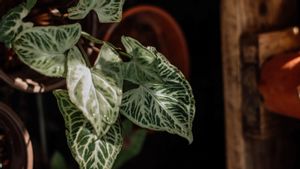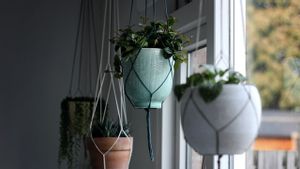YOGYAKARTA – Roots affect leaf growth and flowering of potted ornamental plants. If the roots are already packed into the pot, there are two ways to keep the plant from growing. First by changing to a bigger pot. Another way is to reduce the roots.
In order to get loose space to develop, the second method is often chosen. The reason, maybe because you like the pot with its appearance. Well, pruning the roots need to pay attention to the steps. Here are the steps you can take to trim bonsai or tabulampot ornamental plants.
1. Know the right time for pruning
When your houseplant's roots are tied to each other, the mass will fill the entire space in the pot. Due to tangled root knots, plants can experience stress and lose air, nutrients, and water.
In other conditions, the roots also need to be pruned. Like when the roots look out through the drainage holes. How often pruning is needed depends on the type of plant and how fast it is growing. But usually, a routine check is carried out every few months by turning the pot. When the plant stems are difficult to get out of the pot, it is necessary to immediately do pruning.

2. Prepare the equipment
Quoting The Spruce, Tuesday, May 17, the tools needed for root pruning include pruning shears or a sharp knife, a long knife, a stick or fork, a small bag of soil, and water.
First, remove your plant from its pot and examine the roots. While doing this, don't just pull the plant out of its pot. If the plant is not too big, turn the pot over and tap the edge of the pot. You may need a long knife if the plant is difficult to remove.
3. Cut the roots
When pruning, start with hot shears or a sharp knife. Cut around the root or below the root core. You can also cut the small roots. Meanwhile, if the plant roots are very dense, you can cut the underside of the old roots to help regenerate healthy growth.
4. Loosen the strong binding roots
Using the fingers, in normal density, can be done gently. But if the entanglement is severe, take a fork or stick to loosen the soil that is stuck to the roots as well as the roots.
VOIR éGALEMENT:
5. Prepare enough soil or planting media
You will need to add the potting mix to the bottom of the container. Make sure the growing medium fills the pot so the roots can sit in the soil about an inch from the bottom of the pot. Also, make sure that the base of the stem is at ground level.
A final tip when pruning tightly bound roots, after pruning and putting it back in the pot, water it with plenty of water. After pruning, plants need to be well hydrated. This last step needs to be done so that the plant recovers and grows again.
The English, Chinese, Japanese, Arabic, and French versions are automatically generated by the AI. So there may still be inaccuracies in translating, please always see Indonesian as our main language. (system supported by DigitalSiber.id)


















